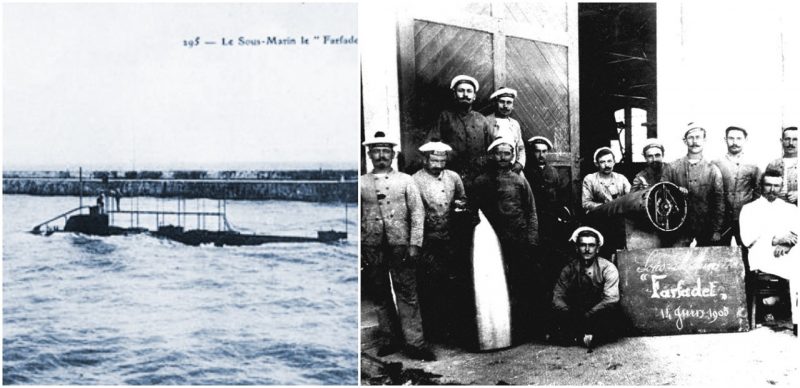After the Franco-German War concluded in May of 1871 with the surrender of France and the Treaty of Frankfurt, the French realized they needed better fighting forces, especially in regards to the French Navy.
The Navy had a small fleet of warships, but it was decided to focus on a new type of ship: the submarine. Unfortunately, in 1905, one of the new submarines, the Farfadet, was accidentally sunk with most of the men still on board.
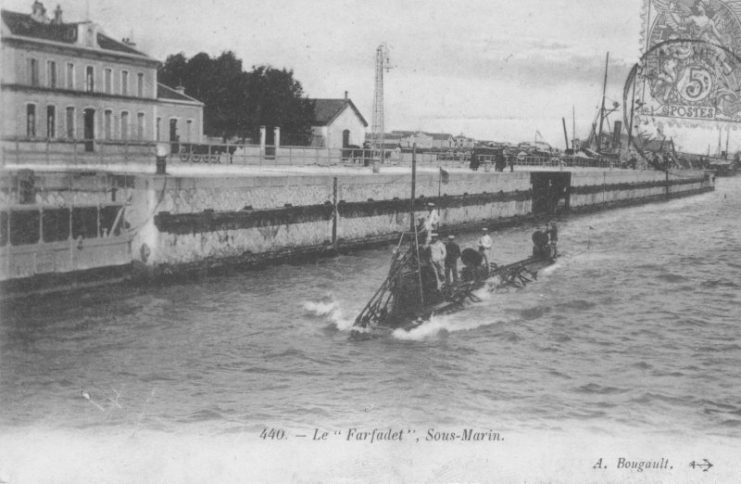
The Farfadet, the Gnome, and the Korrigan were laid out in 1901, with the Lutin following in 1903. All of the ships had steel hulls and were one hundred thirty-four feet and seven inches long with a surface displacement of one hundred eighty-five tons.
They ran on a single electric motor at about six knots on the water and a little over four knots when submerged. Each of the subs was outfitted with four torpedoes and usually staffed with about twenty men.
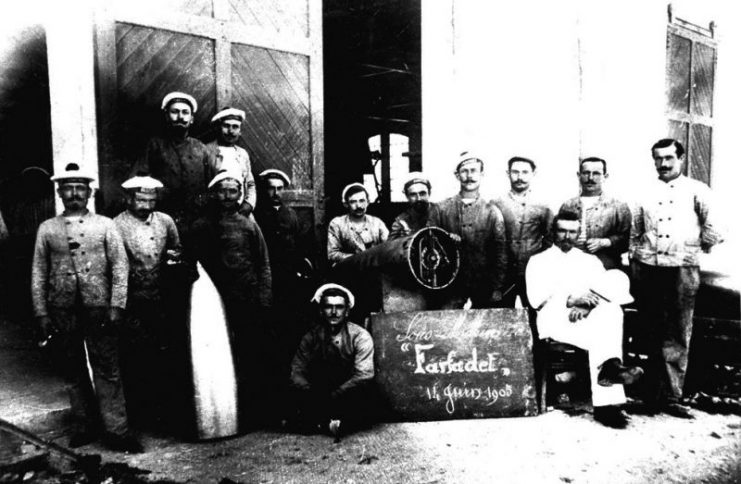
In 1904, the Farfadet and the Kerrigan were towed to Bizerta in Tunisia, North Africa, a French protectorate from 1881 to 1955. The subs were taken to Bizerta to defend the harbor which was, and still is, an important port.
The next year, the sub, directed by Commander Cyprien Ratier, was doing routine diving exercises near the coast of Sidi Abdullah when Ratier ordered the ballast tanks filled with water to allow the ship to dive. The submarine started to settle too fast because the hatch had not been fastened shut properly.
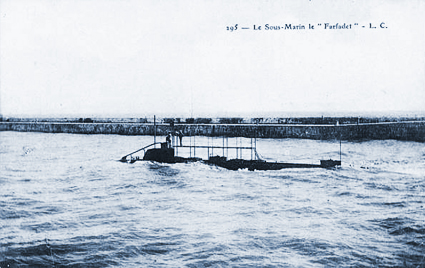
Ratier and two other men kept trying to secure the hatch but the amount of water rushing in displaced the air inside the sub and Ratier and the other men were pushed out of the hatch and into the water. As the Farfadet sank her bow dipped down and came to rest in the mud.
The sub was on the bottom, thirty feet below the water with sailors banging on the hull to let rescuers know they were alive. Divers were sent in to secure the sub in preparation of lifting it to the surface with a floating crane. It was lifted to a pontoon and air was able to get into the interior. The crew intended to move her to shallow water where she could be boarded.

The surviving sailors had already been inside for over twenty-four hours when, as the Farfadet was being moved, the crane failed and the sub was dropped and again submerged. The recovery of the sub wasn’t successful until eight days later, by which time all of the crew had died.
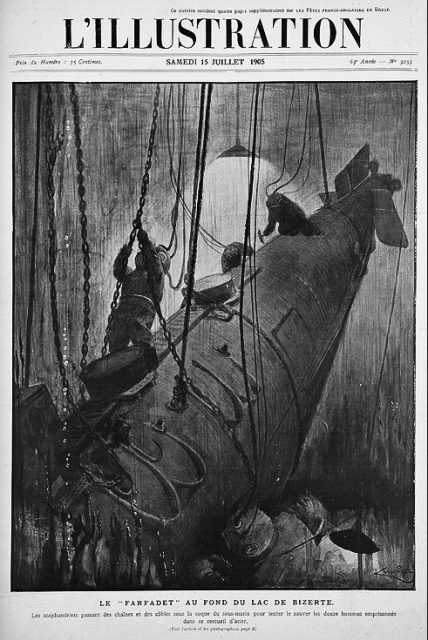
The sub was again lifted by a floating dock and towed into dry dock where all of the water was pumped out and the crew of the Kerrigan was assigned to collecting the dead bodies. All but eight of the men were scattered about the bow and mid-ship and were probably killed instantly when the water rushed into the sub.
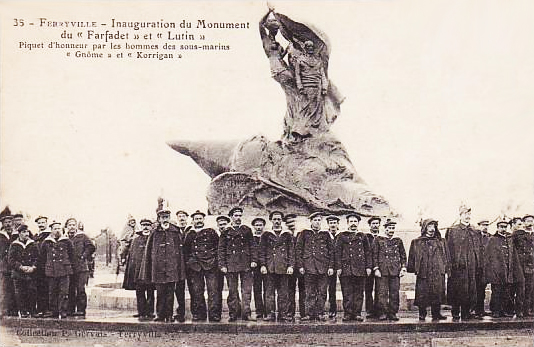
The bodies in the rear were thought to have been killed when the sub dropped from the crane. The sailors had attempted to keep water out of the opened air holes with their uniforms. Eight of the men had ducked into a compartment and were banging on the hull until they were overcome by chlorine gas emitted from the batteries when they were exposed to seawater.

The dead were shipped back to France after a funeral service was held in Bizerte and the sub was salvaged and repaired. She was put into service as the Follet in December of 1908 and continued her service until 1913.
